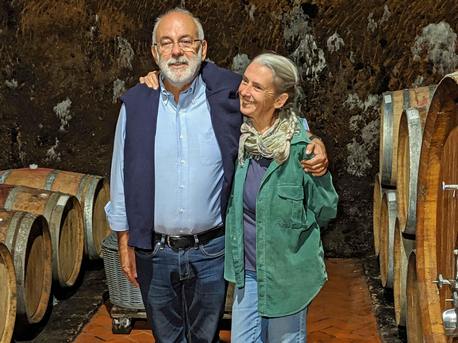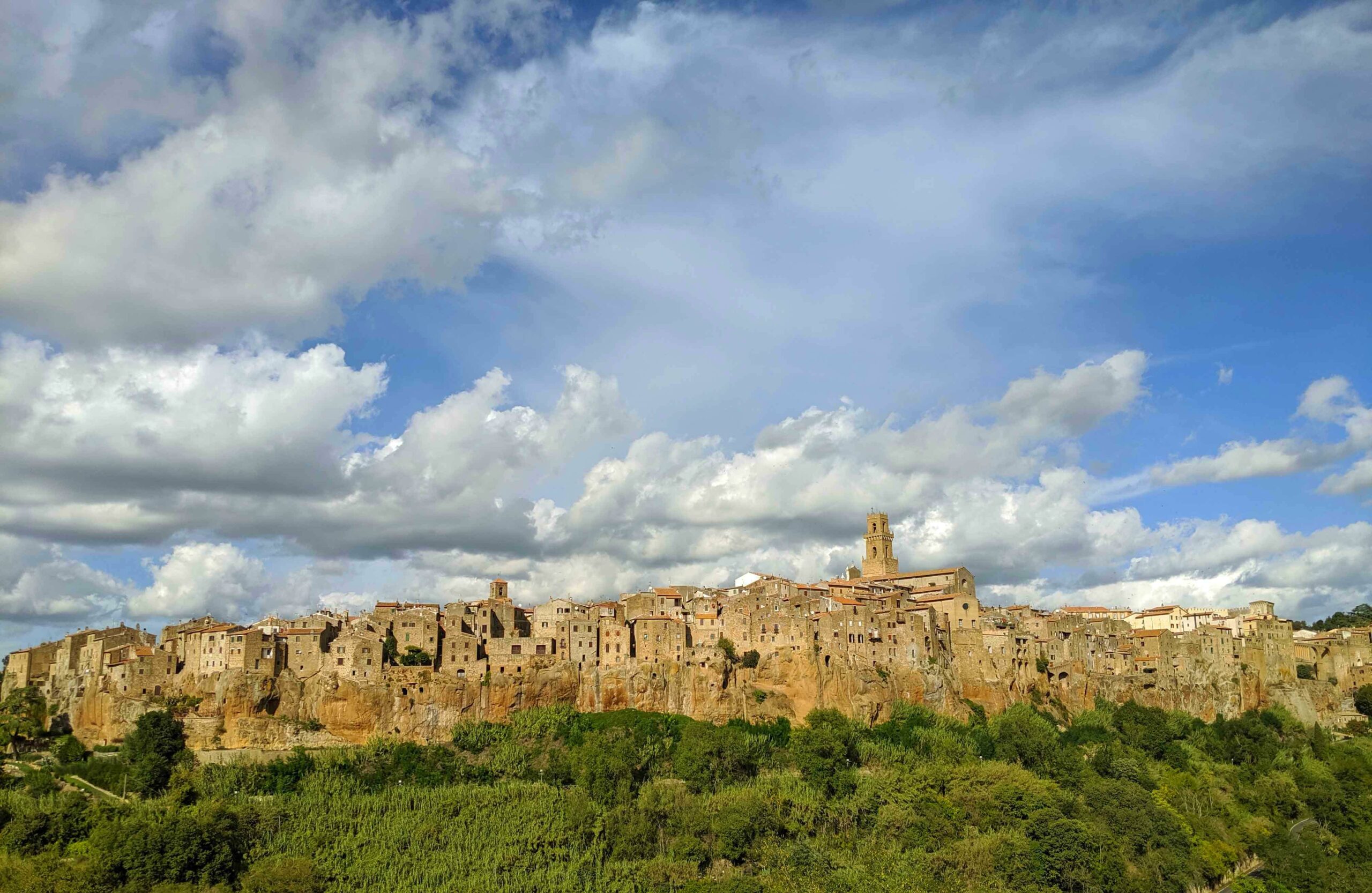Stone cities, stone Etruscan tombs, and vineyards bursting from soil of broken stone. The slightly porous gray rock known in Italian as “tufo” (“tuff” in English) consists of compressed ash from a long-extinct volcano. It is the stone that pokes through the ground throughout the highlands of the eastern Maremma. The monumental medieval cities of Pitigliano (above) and Sovana are either carved from tufo or built from blocks of it. Near Sovano, Etruscans left impressive tombs carved into a tufo hillside.
 Winemaker Carla Benini embraces the red volcanic soils, crafting wines of surprising depth from some of the grapes indigenous to this corner of the Maremma. She and her husband, documentary filmmaker Edoardo Ventimiglia, settled on this land outside Sovana in 1990 and have spent the last three decades coaxing it back to fecundity. The agronomist of the couple, Benini lets the land dictate both the grapes and a cultivation techniques. Her principal red is neither the great Tuscan Sangiovese nor the French varietals that fare so well elsewhere in the region. The standard-bearer for Sassotondo (Pian di Conati 52, Sovana; sassotondo.it) is Ciliegiolo (chill-ee-eh-gee-OH-loh), a small-berried red varietal that slightly resembles a wild cherry—hence the name. One DNA analysis suggests it could be a parent of Sangiovese, while another says it’s an offspring.
Winemaker Carla Benini embraces the red volcanic soils, crafting wines of surprising depth from some of the grapes indigenous to this corner of the Maremma. She and her husband, documentary filmmaker Edoardo Ventimiglia, settled on this land outside Sovana in 1990 and have spent the last three decades coaxing it back to fecundity. The agronomist of the couple, Benini lets the land dictate both the grapes and a cultivation techniques. Her principal red is neither the great Tuscan Sangiovese nor the French varietals that fare so well elsewhere in the region. The standard-bearer for Sassotondo (Pian di Conati 52, Sovana; sassotondo.it) is Ciliegiolo (chill-ee-eh-gee-OH-loh), a small-berried red varietal that slightly resembles a wild cherry—hence the name. One DNA analysis suggests it could be a parent of Sangiovese, while another says it’s an offspring.
Ciliegiolo wines from Sassotondo spice up the glass
 Ciliegiolo grows in tight bunches, so it’s very susceptible to fungal disease. Benini cultivates it in broadly spaced rows with a lot of pruning to encourage good ventilation. (All the Sassotono vineyards have been certified organic since 1994.) Her simple expression of the grape is fermented in steel and comes across as an untannic, fruity red with a lot of black pepper—a perfect pasta or poultry red. I’m fond of her aged Ciliegiolo from the 60-year-old San Lorenzo vineyard in Pitigliano. The wine spends 24 months in 1,000-liter Slavonian oak barrels followed by 15 months in bottle before release. The nose is a complex swirl of black cherry, black currants, black pepper, and clove with a hint of eucalyptus. Round and smooth, it’s a wine to savor.
Ciliegiolo grows in tight bunches, so it’s very susceptible to fungal disease. Benini cultivates it in broadly spaced rows with a lot of pruning to encourage good ventilation. (All the Sassotono vineyards have been certified organic since 1994.) Her simple expression of the grape is fermented in steel and comes across as an untannic, fruity red with a lot of black pepper—a perfect pasta or poultry red. I’m fond of her aged Ciliegiolo from the 60-year-old San Lorenzo vineyard in Pitigliano. The wine spends 24 months in 1,000-liter Slavonian oak barrels followed by 15 months in bottle before release. The nose is a complex swirl of black cherry, black currants, black pepper, and clove with a hint of eucalyptus. Round and smooth, it’s a wine to savor.

